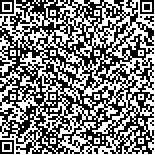|
|
|
| |
|
|
| 本文已被:浏览 831次 下载 791次 |

码上扫一扫! |
|
|
| 横带髭鲷(Hapalogenys mucronatus)仔鱼饥饿不可逆点及摄食生长特性研究 |
|
付铁中1, 平洪领1,2, 张涛1,2, 史会来1,2, 何杰1,2, 李彬1,2
|
|
1.浙江海洋大学海洋与渔业研究所 浙江舟山 316021;2.浙江省海洋水产研究所 浙江省海水增养殖重点实验室 浙江舟山 316021
|
|
| 摘要: |
| 横带髭鲷(Hapalogenys mucronatus)为我国东南沿海具有良好发展前景的养殖鱼类,目前亟待突破其规模化苗种培育的瓶颈技术问题。为探究横带髭鲷仔鱼发育阶段的摄食和生长特性,采用实验生态学方法,在水温(24±0.2)℃、盐度为26的条件下对饥饿仔鱼形态发育、生长、不可逆点及投喂状态下的摄食节律进行研究。结果表明,孵化出膜后的初孵仔鱼,3日龄开口摄食,进入混合营养期,3日龄卵黄囊消耗完毕,油球于8日龄消耗完全,混合营养期为5d。饥饿组仔鱼全长呈先增长后下降趋势,拐点出现在3日龄,在4日龄有畸形仔鱼出现。饥饿仔鱼初次摄食率为10.12%,最高初次摄食率出现在7日龄,为85.06%;PNR出现在7日龄和8日龄之间,至9日龄全部死亡。早期仔鱼(7日龄)的摄食高峰出现在7:00、11:00和15:00,晚期仔鱼(14日龄)在7:00、11:00、15:00和19:00四个时间段,摄食高峰均出现在白天,属于典型的白天摄食类型,随着仔鱼的生长发育,摄食高峰有所延长。横带髭鲷仔鱼最佳开口摄食时间在3日龄,掌握仔鱼的摄食高峰期,在此时间段驯化配合饲料,对于活体饵料向配合饲料的驯食转化具有重要实践意义。 |
| 关键词: 横带髭鲷(Hapalogenys mucronatus) 仔鱼 饥饿 不可逆点 摄食节律 |
| DOI:10.11693/hyhz20220300076 |
| 分类号:Q955;S965 |
| 基金项目:舟山市科技计划项目,2022C31056号,2021C31012号;浙江省“三农九方”科技协作计划项目,2022SNJF073号;浙江省海洋水产研究所科技计划项目,HYS-CZ-004号,HYS-ZY-202105号。 |
|
| STUDY ON THE IRREVERSIBLE STARVATION POINT AND FEEDING GROWTH CHARACTERISTICS OF HAPALOGENYS MUCRONATUS LARVAE |
|
FU Tie-Zhong1, PING Hong-Ling1,2, ZHANG Tao1,2, SHI Hui-Lai1,2, HE Jie1,2, LI Bin1,2
|
|
1.Zhejiang Ocean University, Zhejiang Marine Fisheries Research Institute, Zhoushan 316021, China;2.Zhejiang Province Key Laboratory of Mariculture and Enhancement, Zhejiang Marine Fisheries Research Institute, Zhoushan 316021, China
|
| Abstract: |
| To explore the feeding and growth characteristics of the larvae of Hapalogenys mucronatus in the development stage, the effects of starvation on morphological development and growth, the point of no return (PNR) of H. mucronatus larvae, and the feeding rhythm of H. mucronatus larvae were studied in an experimental ecology approach under the condition of water temperature (24±0.2)℃ and salinity 26. Results show that the larvae began to eat in 3 days after hatching, entered the mixed nutrition period for 5 day, and completely absorbed the yolk sac and oil globules in 3 and 8 days, respectively. The average total length of larvae in the starved group increased first and then decreased, the inflection point appeared at 3-day old, and some larvae exhibited a physical abnormality at 4-day old. The initial feeding rate of hungry larvae was 10.12%, and the highest feeding rate was 85.06% in 7 days. The PNR was detected between 7 and 8 days, and all the starved larvae died in 9 days. The feeding peak of early stage larvae (7 days) occurred at 7:00, 11:00, and 15:00, and that of late stage larvae (14 days) at 7:00, 11:00, 15:00, and 19:00, and all appeared in daytime. Therefore, H. mucronatus was typically feeding only in daytime, and the feeding peak period was gradually prolonged with fish growth. The optimum open feeding time of H. mucronatus larvae was at 3-day old. Therefore, it is important to grip the timing of the feeding peak and transition in feeding regime from live bait to compound feed for good and efficient larvae culture of the fish. |
| Key words: Hapalogenys mucronatus larva starvation point of no return feeding rhythm |
|
|
|
|
|
|
